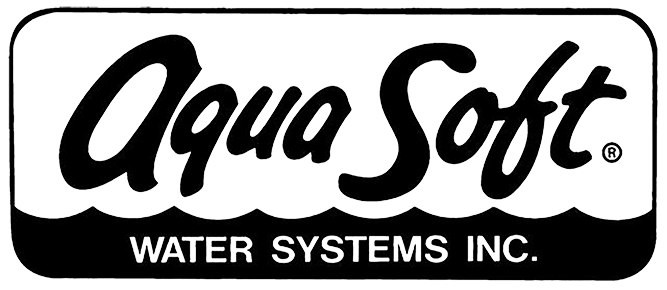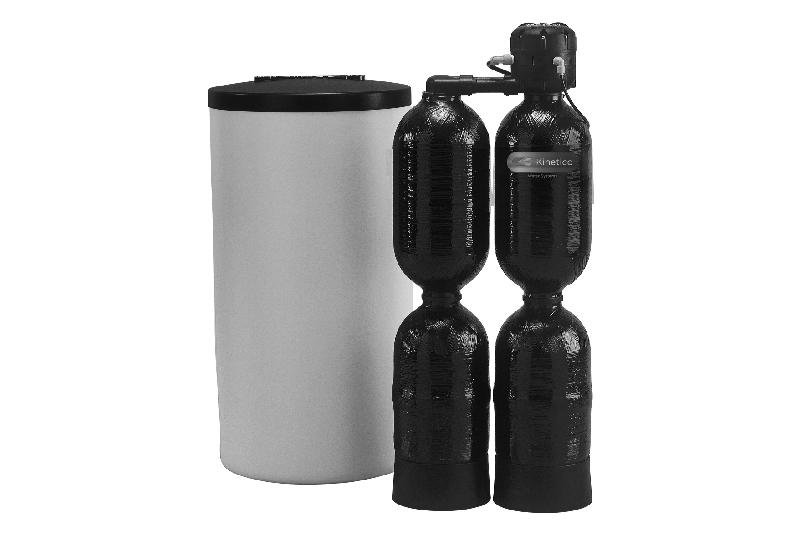Water hardness is one of the most common water quality problems homeowners experience. While there are no serious health risks associated with drinking hard water, it can be damaging to your skin, your hair, and your home.
Hard water is caused by excess concentrations of minerals in the water, mainly calcium and magnesium. The chemical structure of calcium and magnesium allows them to bond easily with other metals. When the water evaporates, limescale is left behind, producing a hard, chalky deposit where water is heated or left standing.
Over time, this build-up can lead to a crusty residue around your faucets or shower head (limescale), damage to your piping, damage to your hot water appliances, low water pressure, soap scum on your sinks and shower walls, dry or irritated skin, and so much more.
These problems can be easily solved with a water softener system. Water softeners are filtration systems that remove the high concentrations of calcium and magnesium in the water through a process of ion exchange.
How exactly do water softener systems work? Find out in this blog.
The Components Of A Water Softener
A water softener system consists of three components that work together to remove minerals from hard water, monitor water flow, and periodically clean the system through a regeneration process.
A Mineral Tank
The mineral tank, which is sometimes called a resin tank, is the component where the actual water softening takes place. When hard water is fed into the tank through a water supply line, it seeps through a bed of resin beads that are covered with sodium (respective potassium) ions. The beads extract the calcium and magnesium ions from the water, so the water that flows through your pipes and into your household appliances is soft.
Control Valve
The control valve is a crucial component of the water-softening system used to measure the amount of water passing through a mineral tank. Control valves are demand-initiated controllers that work to maintain the efficiency of water-softening units.
The resin beads in the mineral tank have a maximum capacity for the mineral content they are able to hold. This means that, over time, their ability to soften the water effectively depletes. Before the beads become too overburdened with the mineral content, the control valve will automatically initiate a regeneration cycle allowing the beads to continue removing calcium and magnesium ions..
The maximum capacity is pre-programmed into the valve’s onboard computer and is typically based on the level of hardness in your water, the size of your home, and the number of people living in your house. A meter that is housed in the valve is used to track the volume of water that enters the tank.
Brine Tank
The brine tank is a smaller tank that usually sits adjacent to the mineral tank and is responsible for assisting with the regeneration process. Dissolving salt pellets or blocks are added into the brine tank to assist in the restoration of the resin beads’ positive charge.
Whenever the control valve detects that the resin beads’ capacity has decreased, the brine solution, which consists of a highly concentrated solution of salt (or potassium in some cases), is released into the mineral tank and flushed through the resin.
How the Water Softener Regeneration Works
There is a common misconception with water softeners that salt is what softens the water. However, this task is actually completed by the thousands of tiny resin beads that filter out the hard water minerals. The salt is simply used to clean the resin beads during the regeneration process so they can keep removing the hardness from your water supply.
In simple terms, regeneration is the process where hard water minerals are rinsed off of the resin beads to recharge them so they can keep functioning properly.
Here are the typical water softener regeneration steps:
- A heavily concentrated salt-water solution (brine) is added to the softener.
- As the brine solution flows through the resin tank, it rinses the beads and replaces the hard water minerals with new sodium. This is known as the backwash cycle of the water softener.
- The brine solution and hard water minerals are flushed out of the tank and into a nearby drain.
- The resin beads are restored and ready to start collecting calcium and magnesium again.
The regeneration process can last about two hours, and it is usually not recommended to use water while it is happening. However, water softening systems like the Kinetico Water Softener, which uses a twin tank system, mean that one tank will always be in service. So, you will have an unlimited supply of clean, soft water, even during the regeneration process.
The Kinetico Premier Series water softeners are non-electric, always online, regenerate on demand, use less water and salt, have iron removal capabilities, and have no computers or timers to set, adjust, repair, or replace.
Get in touch with Aqua Soft Water Systems Inc. to find out more about our water purification solutions.


